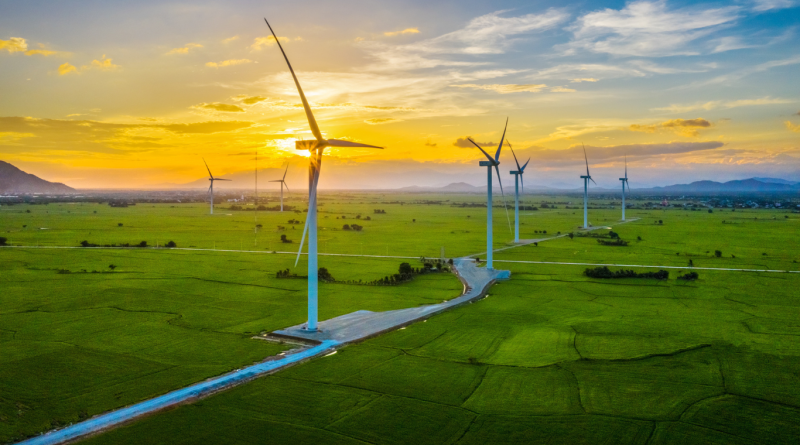Top Renewable Energy Trends to Watch in 2025
The renewable energy sector is evolving rapidly, spurred by innovations, climate imperatives, and governmental policies. With 2025 around the corner, the industry is poised to reach new heights, addressing global energy demands sustainably.
This article explores five major trends that will define the renewable energy landscape, shaping a cleaner and more efficient future.
1. Surge in Global Renewable Energy Capacity
The growth of renewable energy capacity remains a focal point in the global energy transition. According to the International Energy Agency (IEA), over 90% of the electricity capacity added globally by 2028 will come from renewable sources. Solar energy leads the charge, with wind energy following closely behind.
- Key Growth Areas: Emerging markets like India and Brazil are experiencing rapid expansions in solar and wind projects, while industrialized nations like the U.S. and Germany continue to invest heavily in offshore wind.
- Projections: Solar capacity is expected to double by 2026, becoming the dominant source of energy in several countries.
Governments and private sectors are aligning efforts to expedite renewable project timelines, emphasizing reduced costs, improved technologies, and a race to meet net-zero goals. Beyond meeting energy needs, this surge reflects a larger effort to replace aging fossil-fuel infrastructure with sustainable alternatives.
2. Enhanced Grid Integration with Advanced Technologies
Technological innovation is transforming renewable energy systems, addressing critical challenges like grid stability and energy efficiency. The convergence of artificial intelligence (AI), big data, and the Internet of Things (IoT) is particularly significant. These technologies are optimizing energy management, enabling smarter grids, and improving the integration of intermittent renewable sources.
- Innovative Solutions: Predictive analytics powered by AI helps operators preempt system failures, minimizing downtime and maintenance costs. IoT sensors enhance data collection from renewable installations, providing real-time insights into energy output and efficiency.
- Impact: These technologies improve renewable energy’s reliability, enabling grids to better handle fluctuations in supply and demand.
The adoption of advanced technologies ensures that renewable energy systems are future-ready, contributing to the goal of resilient, efficient, and sustainable energy networks.
3. The Rise of Community Solar Projects
Community solar initiatives are a transformative trend, offering renewable energy access to those unable to install solar panels on their property. Such projects are becoming increasingly popular in countries like the United States and Australia, where local solar farms are empowering entire neighborhoods.
- Why It Matters: Community solar addresses a critical gap in the energy transition, enabling broader participation and promoting energy equity. Renters, apartment dwellers, and low-income households can now reap the benefits of solar energy without requiring rooftop installations.
- Growth Projections: In the U.S. alone, community solar projects currently produce 6.5 gigawatts, with projections to double by 2028.
- Case Studies: Programs like New York State’s Shared Solar Initiative have shown how such models reduce energy bills while fostering a sense of collective responsibility for sustainability.
Community solar projects represent a vital step toward inclusivity, democratizing renewable energy and ensuring its benefits reach diverse populations.
4. Increasing Adoption of Energy Storage Solutions
One of the primary challenges of renewable energy is its intermittency. The sun doesn’t always shine, and the wind doesn’t always blow. Energy storage solutions, particularly battery technologies, are bridging this gap.
- Advancements in Technology: Lithium-ion batteries are leading the market, but new technologies like solid-state batteries and flow batteries are emerging as potential game-changers.
- Global Adoption Trends: Countries like Germany and Australia are rapidly deploying distributed energy storage systems (DESS) at both residential and industrial scales.
- Economic Benefits: Storage solutions stabilize electricity prices by enabling peak shaving and reducing grid congestion.
Storage technology allows energy produced during peak generation periods to be stored for use during times of high demand, ensuring a consistent and reliable power supply. This evolution is critical for transitioning to a fully renewable-powered grid.
5. Policy Developments Accelerating Transition
Governments and regulatory bodies worldwide are doubling down on policies that support renewable energy growth. These policies are instrumental in incentivizing investments and driving innovation.
- Policy Highlights:
- The United States’ Inflation Reduction Act has directed billions toward renewable energy projects, offering tax credits for solar and wind installations.
- The European Union is strengthening its “Fit for 55” initiative, which aims to reduce greenhouse gas emissions by 55% by 2030.
- Japan’s draft climate strategy sets ambitious targets to cut carbon emissions by 60% from 2013 levels by 2035.
- Global Influence: Policymakers worldwide are adopting frameworks to encourage public-private partnerships, streamline renewable project approvals, and introduce stricter emissions regulations.
These policies not only encourage renewable energy adoption but also position nations as leaders in the global clean energy race. They underline the urgency of achieving climate goals while fostering economic growth through green energy innovation.
